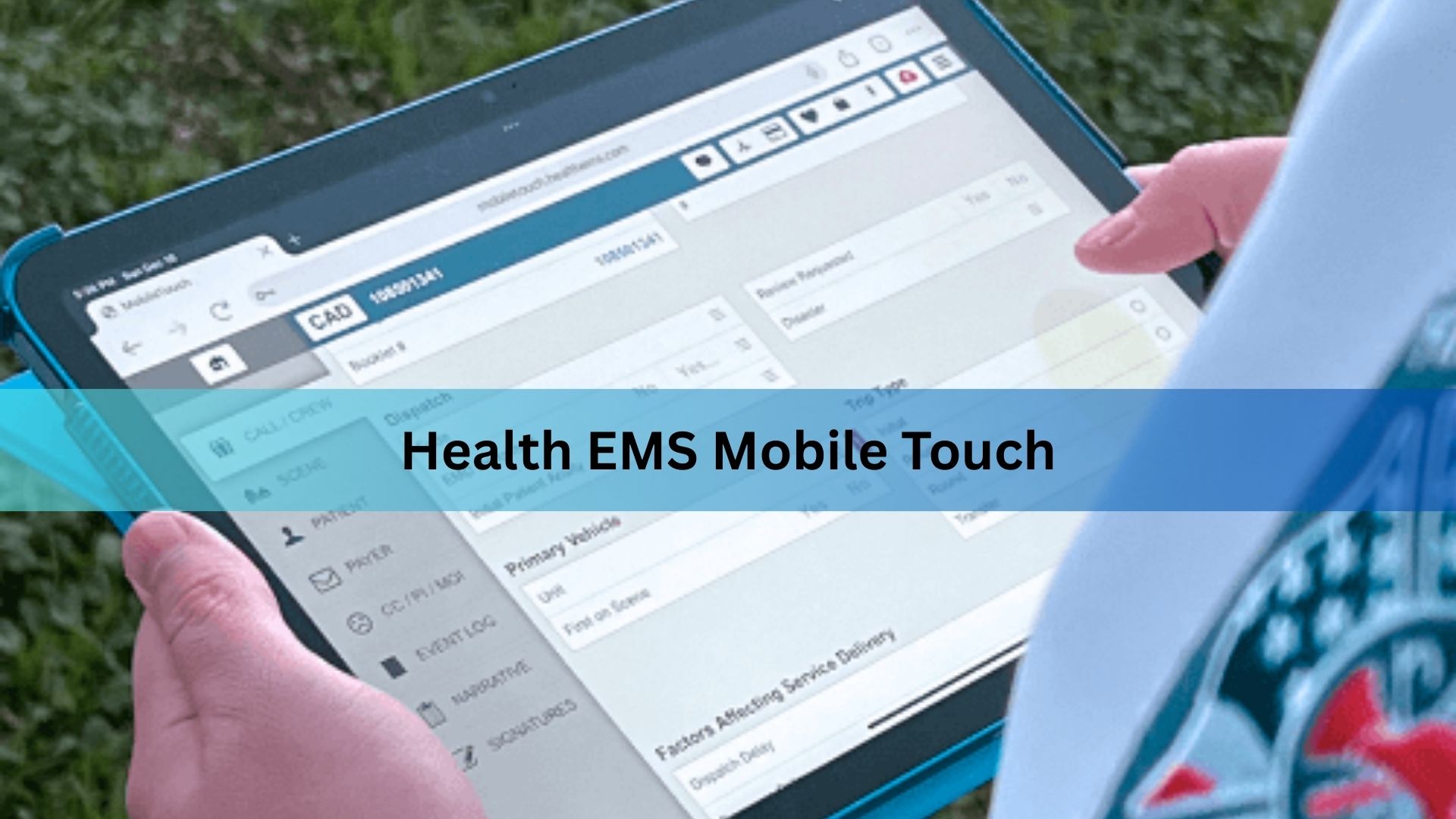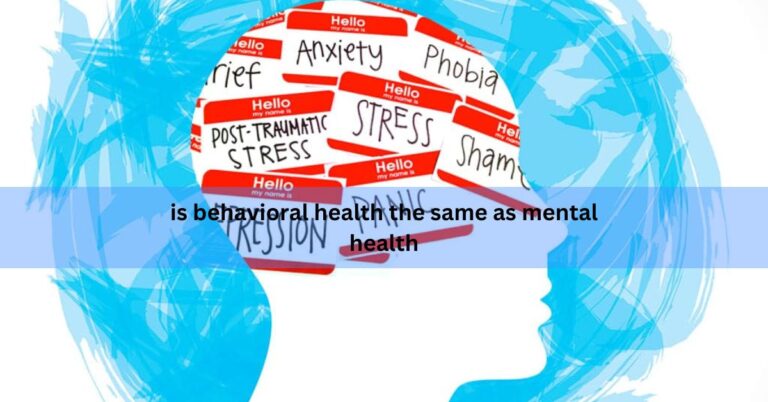Health EMS Mobile Touch – Revolutionizing Emergency Medical Services!
Emergency Medical Services (EMS) have always operated under intense pressure, where every second counts, and every decision can have life-altering consequences. In recent years, innovations in mobile technology have begun to transform how EMS professionals operate in the field. Among these innovations, HealthEMS MobileTouch—a mobile touch-enabled ePCR (electronic Patient Care Reporting) platform—is emerging as a game-changer.
This article explores the background of HealthEMS MobileTouch, its key benefits, integration into the EMS workflow, technical and regulatory considerations, and how it aligns with broader trends in mobile health (mHealth) and telemedicine.
A Brief Background: HealthEMS and MobileTouch
HealthEMS is a cloud-based, all-in-one electronic patient care reporting (ePCR) solution designed for EMS agencies, paramedics, and emergency first responders. Created by Sansio, Inc., it offers configurable documentation, analytics, revenue optimization, and quality assurance tools—helping agencies streamline EMS workflows and compliance.
MobileTouch is the native iPadOS mobile app version of HealthEMS, tailored for modern, touch-interface use. Officially released and available on the Apple App Store, MobileTouch provides easy, configurable documentation, advanced reporting, and integrates seamlessly with HealthEMS workflows. Apple It was designed specifically for HealthEMS clients and targets paramedics in the field, giving them a dedicated, touch-first interface for patient care reporting.
Why Mobile Touch Matters in EMS?
Faster, More Accurate Documentation
Traditionally, EMS crews have relied on pen-and-paper reports or clunky desktop systems. Such methods are slow and prone to transcription errors. With MobileTouch, documentation occurs directly on a touchscreen tablet—allowing rapid, accurate input of patient history, interventions, vital signs, and scene notes. This minimizes redundant entries and speeds up turnaround time.
Enhanced Reporting and Analytics
Beyond documentation, MobileTouch taps into advanced reporting capabilities. HealthEMS supports revenue optimization, QA/QI workflows, and built-in medical necessity scoring and validations—helping agencies monitor performance, ensure compliance, and optimize billing.
Improved Workflow Integration
One notable benefit is integration with partner platforms like Handtevy: patient care data entered via Handtevy flows directly into HealthEMS reports—eliminating duplicate documentation and streamlining workflows. Handtevy This highlights how MobileTouch can harmonize with existing tools used by EMS personnel, making adoption smoother and less disruptive.
Also Read: Anschutz Health Sciences Building – Explore Ahsb Innovation!
Benefits at a Glance:
1. Operational Efficiency
MobileTouch’s touch interface and intuitive design allow for faster input and fewer errors. Agencies save time and resources, enabling first responders to focus on patient care rather than paperwork.
2. Data Quality and Revenue Integrity
Configurable data fields, scenario-based validations, and medical necessity scoring help ensure that runs comply with regulatory and billing criteria—boosting accurate revenue capture and reducing audit risk.
3. Quality Assurance & Continuous Improvement
HealthEMS includes built-in QA/QI metrics and dashboards to proactively monitor documentation quality, identify missing or erroneous entries, and send secure messaging to crews for correction—enhancing documentation quality over time.
4. Interoperability and Integration
With integrations like Handtevy and other health systems, MobileTouch enables seamless data flow across different software platforms. It helps agencies avoid redundant documentation, improve accuracy, and streamline coordination.
5. Security and Compliance
As a medical app, MobileTouch supports HIPAA-level privacy standards and security. The App Store listing notes that the app handles location, usage, diagnostics, and contact data—presumably under controlled policies—and emphasizes security and privacy enhancements.
Integration and Field Usage:
Device Compatibility
MobileTouch runs on iPads requiring iPadOS 16.6 or later—so agencies must provision compatible tablets.
Training and Adoption
Implementing MobileTouch requires training for EMS personnel—frontline providers must become fluent with the interface, documentation flows, and reporting practices, while admin staff must configure forms, validation rules, and QA workflows.
Interoperability with EMS Systems
Agencies often already use CAD (Computer-Aided Dispatch) systems, hospital EHRs, or other mobile pre-hospital tools. Integrating MobileTouch to receive dispatch information or share ePCR fields via HealthEMS Data Exchange is vital for seamless workflows.
Support and Maintenance
As with all mission-critical apps, agencies will rely on timely support. Sansio provides ongoing customer support, professional services, and regular updates—evident from their product updates page announcing app releases and integration launches.
Context in the Broader mHealth Landscape:
The Rise of mHealth
Mobile health—or mHealth—refers to using mobile devices (smartphones, tablets, wearables) for health services, data collection, real-time monitoring, and telemedicine. It’s a fast-growing area in digital health, especially in emergency care.
Real-Time Collaboration Tools in EMS
Beyond documentation tools like MobileTouch, platforms such as Pulsara support real-time team communication between EMS crews and receiving hospitals—enhancing coordination during high-stakes incidents.
Mobile Solutions for Patient Care and Telehealth
EMS departments are increasingly adopting telehealth and mobile-integrated health (MIH) to deliver virtual care, triage non-emergency cases, and reduce unnecessary transports to overcrowded ERs. Examples include video consultations and remote assessments.
Future Technologies: Cognitive Assistants and Head-Mounted Displays
Emerging research explores wearable cognitive assistants using AR smart glasses (e.g., “CognitiveEMS”) that can recognize EMS actions, suggest protocols in real time, and interpret speech—enhancing decision-making under stress.
Implementation Challenges & Considerations:
Device Logistics and Maintenance
Agencies must maintain a fleet of dedicated iPads or similar tablets—ensuring battery life, software updates, and physical durability are kept in check for field conditions.
Training & Adoption Curve
Switching from traditional forms to a touch-based ePCR system includes a learning curve. Comprehensive programs and ongoing support are necessary to make adoption successful.
Integration Complexity
HealthEMS MobileTouch must synchronize with dispatch systems, hospital EHRs, billing systems, and QA systems—requiring thoughtful planning and technical coordination.
Regulatory Compliance and Data Security
Handling sensitive patient data imposes compliance obligations (HIPAA, regional privacy laws, data encryption, access auditing). Agencies must verify that security practices in MobileTouch and HealthEMS meet these standards.
Summarizing the Impact:
In essence, HealthEMS MobileTouch represents a significant step forward for EMS documentation and mobile responsiveness. Its flexible design, touch-first interface, and integrated reporting tools help expedite documentation, improve data accuracy, and streamline operations.
FAQ’s:
1. What is HealthEMS MobileTouch?
HealthEMS MobileTouch is a mobile app for iPads that helps EMS workers quickly record patient care information, vital signs, and scene details. It’s a touch-screen version of the HealthEMS system made for use in the field.
2. Who can use HealthEMS MobileTouch?
It’s made for paramedics, EMTs, and other emergency medical staff who need to document patient care during calls. Agencies using HealthEMS can add MobileTouch for their teams.
3. How does MobileTouch help EMS workers?
It makes documentation faster, easier, and more accurate by letting users enter information directly on a tablet. It also works with other tools like Handtevy to avoid double entry.
4. Is MobileTouch secure for patient data?
Yes. It follows HIPAA privacy and security rules to keep patient data safe. The app uses encryption and secure connections to protect information.
5. What devices work with MobileTouch?
MobileTouch runs on iPads with iPadOS 16.6 or later. EMS agencies must provide compatible devices to their staff.
Conclusion:
“Health EMS Mobile Touch” is much more than a fancy app—it’s a strategic tool helping EMS agencies adapt to the demands of modern emergency response. By marrying ease of use with powerful documentation, reporting, and integration capabilities, HealthEMS MobileTouch empowers responders to focus on patients, not paperwork.
Read More:






